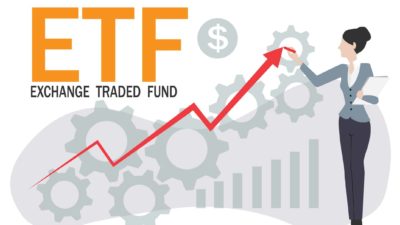Something strange is happening with the iShares S&P 500 ETF (ASX: IVV) this week. Back on Monday, units of this exchange-traded fund (ETF) were trading for almost $600 each. But today, this ETF is going for just $39.07 per unit. It also seems to have a new ticker code.
So has this popular ASX ETF really lost almost 95% of its value this week?
The iShares S&P 500 ETF is one of the most widely-held ETFs on the ASX. It's actually the ASX's most popular internationally-based fund. This ETF tracks the S&P 500 Index (SP: .INX), which is the most widely tracked index in the world.
It represents the 500 largest companies on the US markets by market capitalisation. That includes everything from Apple, Microsoft, and Amazon to Exxon Mobil, Coca-Cola, and McDonald's.
So no, this ETF hasn't collapsed by 95% this week. If the US S&P 500 Index was down 95% in one week, we'd certainly all know about it.
Rather, this ETF has just undergone a stock split.
A stock split for the S&P 500 ETF?
A stock split occurs when a company or ETF decides to increase its share (or, in this case, unit) count. It issues new shares (or units) to existing investors, at the same time diluting the value of the existing shares out there.
This has the effect of lowering the share (or unit) price of the company or ETF, but makes up for this by giving away new shares (or units).
This can be done for a number of reasons. But most do so to boost liquidity and to make it easier for investors to buy and sell shares or units.
At the start of this week, one single unit of the iShares S&P 500 ETF would set an investor back almost $600. That makes it a rather unwieldy investment to have to deal with.
This ETF's provider must have thought so too, because back on 23 November, BlackRock announced that the iShares S&P 500 ETF would be undergoing a 15-to-1 stock split.
That means that for every one unit of this ETF, investors now own 15. Concurrently, the unit price of this ETF has just been reduced by a factor of 15.
So if an ASX investor used to own 10 iShares S&P 500 units, worth $5,860, today, they own 150 units, each worth $39.07. Same value, different path to getting there.
So no investor has been left better, or worse off, from this split. It's just a cosmetic change for all intents and purposes.
Is it IVV or IVVDB?
But what's with the new ticker code? Yes, the iShares S&P 500 ETF used to trade under the code 'IVV'. But today, the ETF has seemingly switched to 'IVVDB'. Well, this is a temporary situation.
As we covered last week, part of the stock split process involves the ETF trading under a 'deferred settlement' basis. So today, the 'IVVDB' units represent the deferred settlement units.
This will only be in place until 13 December. That's when the deferred settlement period will have concluded and the ETF reverts to its old 'IVV' code.
The IVVDB units will seamlessly be converted into IVV units when this happens. So if you're desperate to buy the newly-split ETF today, don't let the new code hold you back.









